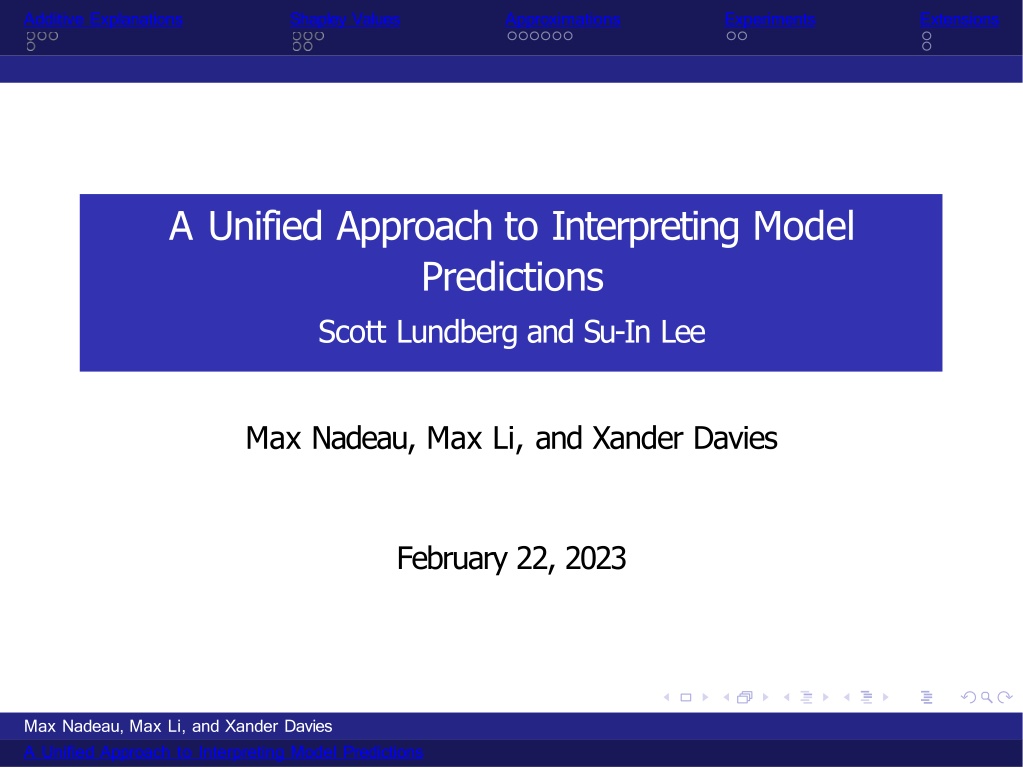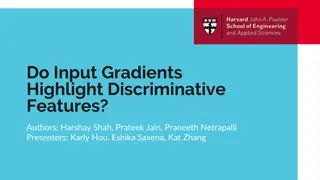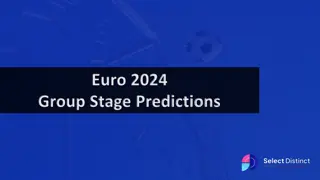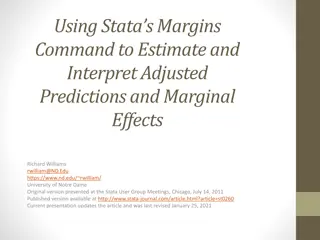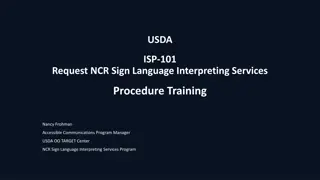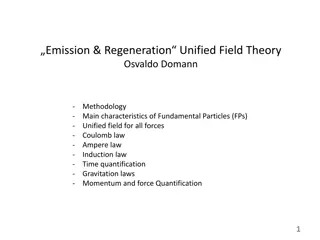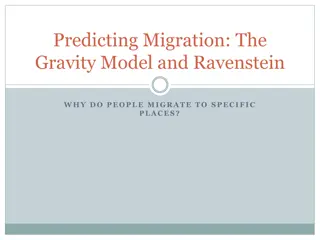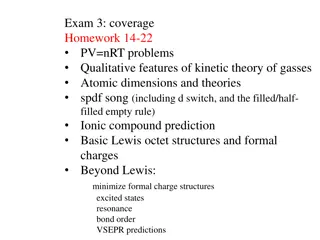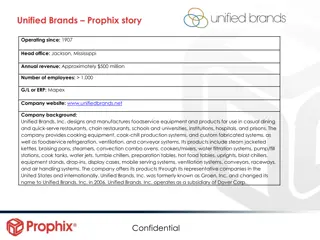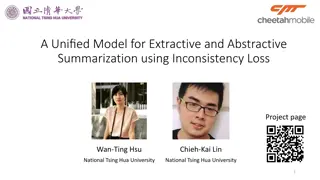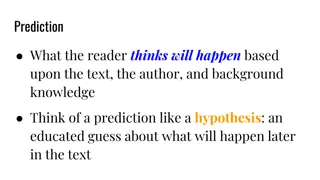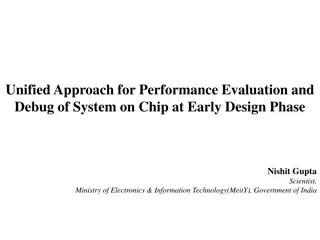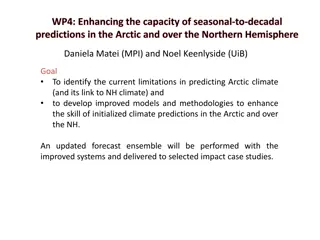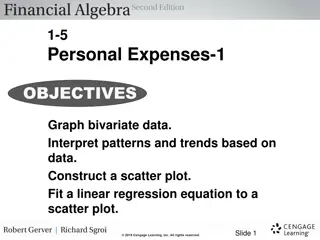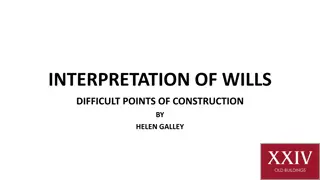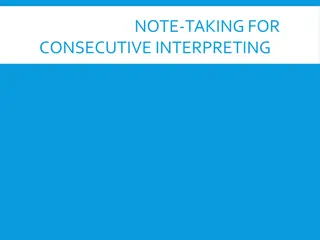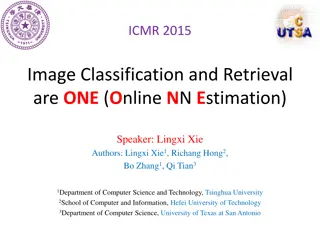A Unified Approach to Interpreting Model Predictions
Unified methodology for interpreting model predictions through additive explanations and Shapley values. It discusses the relationship between Additive Explanations and LIME, introduces Shapley values, approximations, experiments, and extensions in model interpretation. The approach unifies various methods for local interpretability, such as Additive Feature Attribution Methods (AFAMs). It explores the importance of features in model outputs and discusses tools like LIME and DeepLIFT as AFAMs for feature attribution.
- Interpreting Model Predictions
- Additive Explanations
- Shapley Values
- Local Interpretability
- Explaining Model Outputs
Download Presentation

Please find below an Image/Link to download the presentation.
The content on the website is provided AS IS for your information and personal use only. It may not be sold, licensed, or shared on other websites without obtaining consent from the author. Download presentation by click this link. If you encounter any issues during the download, it is possible that the publisher has removed the file from their server.
E N D
Presentation Transcript
Additive Explanations Shapley Values Approximations Experiments Extensions A Unified Approach to Interpreting Model Predictions Scott Lundberg and Su-In Lee Max Nadeau, Max Li, and Xander Davies February 22, 2023 Max Nadeau, Max Li, and Xander Davies A Unified Approach to Interpreting Model Predictions
Additive Explanations Shapley Values Approximations Experiments Extensions Outline 1 Additive Explanations Overview and relation to LIME Desiderata 2 Shapley Values Introduction to Shapley values Removing features 3 Approximations 4 Experiments 5 Extensions Global interpretability Inner interpretability Max Nadeau, Max Li, and Xander Davies A Unified Approach to Interpreting Model Predictions
Additive Explanations Shapley Values Approximations Experiments Extensions Overview and relation to LIME Introduction to Additive Feature Attribution Methods This paper unifies 6 previous methods for local interpretability (i.e. explaining the output of a model f on a particular input x) as additive feature attribution methods , (AFAMs). An additive feature attribution method consists of: An enumeration of the features present in x A protocol for removing some of the features from x, and therefore a definition of the input that has no features , here called y. An approximation of f (x) called g(x ),and an approximation of f (y) called g(y ) A partition of g(x ) g(y )among the enumerated features of x, indicating how important each feature was for the model s output on x. The importance of a feature i is denoted i, so i i = g(x ) g(y ) Max Nadeau, Max Li, and Xander Davies A Unified Approach to Interpreting Model Predictions
Additive Explanations Shapley Values Approximations Experiments Extensions Overview and relation to LIME LIME as an Additive Feature Attribution Method You all remember LIME from the last presentation. LIME (for explaining a classification of some image x) is an AFAM. The set of superpixels is the set of features of x We remove a superpixel (i.e. feature) by replacing its pixels with grey. So the image containing no features is all grey. LIME outputs a function gthat approximates f (x) and f (y) as g(x ) and g(y ). g provides a weighting gifor the importance of each superpixel in determining f (x); these serve as the i. Max Nadeau, Max Li, and Xander Davies A Unified Approach to Interpreting Model Predictions
Additive Explanations Shapley Values Approximations Experiments Extensions Overview and relation to LIME DeepLIFT as an Additive Feature Attribution Method DeepLIFT is another local interpretability method, proposed in (Shrikumar et al., 2019). DeepLIFT (for explaining a classification of some image x) is an AFAM. The set of pixels is the features of x. We pick some reference value to serve as y , the image with no features. Removing a feature of x consists of setting a pixel to the value of that pixel in the reference image. DeepLIFT doesn t approximate f (x) and f (y), it just uses g(x ) = f (x) and g(y ) = f (y). DeepLIFT calculates a value C xi o for each pixel xisuch that i i x o importance of xi to classification f (x). = f (x) f (y). Each C C x o represents the i Max Nadeau, Max Li, and Xander Davies A Unified Approach to Interpreting Model Predictions
Additive Explanations Shapley Values Approximations Experiments Extensions Desiderata Desiderata for Additive Feature Attribution Methods They propose three desirable properties for an AFAM. Local accuracy: g(x ) = f (x). As we saw on the last two slides, DeepLIFT meets this criterion but LIME does not necessarily. Consistency: For some input x , let x \ i denote removing feature i from x . Let zbe an alternative input produced by removing some of x s features. Suppose you have two models, f and f . If, z, f (z) f (z \i) f (z) f (z \i), then our AFAM should have i(f ,x) i(f ,x). In other words, if including feature i in the input always makes a bigger difference in model f than in model f ,then the AFAM should give a higher importance ifor the model f than for f . Missingness: This third criterion is described as really just a minor book-keeping property , so we ll ignore it. Max Nadeau, Max Li, and Xander Davies A Unified Approach to Interpreting Model Predictions
Additive Explanations Shapley Values Approximations Experiments Extensions Introduction to Shapley values Cooperative games Suppose we have a game with d players, where each player can choose whether or not to cooperate. Assume a reward function g : P([d]) R. If S [d] is the set of players that choose to cooperate, then the group receives reward g(S). We want to determine how much each player contributes to the reward. However, the marginal contribution of player i may depend on which other players have also chosen to cooperate. gdoes not need to be monotonic! Max Nadeau, Max Li, and Xander Davies A Unified Approach to Interpreting Model Predictions
Additive Explanations Shapley Values Approximations Experiments Extensions Introduction to Shapley values Shapley values Maybe wecan just take the averageof player i s marginal contribution over all subsets. In fact, this calculation gives player i s Banzhaf power index: g(S {i}) g(S) 1 (1) 2d 1 S [d]\{i} The Shapley value reweights the marginal contributions based on the size of the subset S: d 1 d 1 j 1 1 d g(S {i}) g(S) (2) j=0 S [d]\{i}, |S|= j or, equivalently, Sd g( ([ (i)])) g( ([ (i) 1])) Max Nadeau, Max Li, and Xander Davies A Unified Approach to Interpreting Model Predictions
Additive Explanations Shapley Values Approximations Experiments Extensions Introduction to Shapley values From games to local interpretability Suppose that for some input x , a model produces prediction f (x ), and wewould like to measurehow important each feature was for the model prediction. We can treat the features as players in a cooperative game, and ask how much each contributed to the output. However, to prompt the model, we need to provide all the input features S. How do we measure what the model would have predicted if it only had access to a subset of the features? In other words, the function g :P ([d]) R is not well-defined. Max Nadeau, Max Li, and Xander Davies A Unified Approach to Interpreting Model Predictions
Additive Explanations Shapley Values Approximations Experiments Extensions Removing features Previously proposed: separate models In Shapley regression values, for every subset of features S [d], we can train a model fSthat tries to predict the labels. The resulting Shapley values are a good metric for how important each feature is for good prediction of the labels. However, they do not provide interpretability for the specific model f we were working with, i.e. what f might do without any information about the features in [d] Smight be very different than optimal prediction. Max Nadeau, Max Li, and Xander Davies A Unified Approach to Interpreting Model Predictions
Additive Explanations Shapley Values Approximations Experiments Extensions Removing features Feature ablation We want to capture what our particular model on f would do if it had no access to features [d] S. This notion is captured by the expectation of the model output given features S. E[f (x) | xS] (3) We can approximate this quantity by sampling over the conditional distribution: N 1 N f (x(i)), x(i) x|xS (4) i=1 Max Nadeau, Max Li, and Xander Davies A Unified Approach to Interpreting Model Predictions
Additive Explanations Shapley Values Approximations Experiments Extensions Model Agnostic: Feature independence Computing SHAP values requires calculating 2ddifferences g(s {i}) g(s). One way to improve this is to assume features are independent, S E[f (x) | xS]= ExS |xS[f (x)] ExS [f (x)] (5) We can then estimate SHAP values via sampling approximations (the Shapley sampling values method) which require fewer than 2ddifference calculations. But, still requires lots of computations. Max Nadeau, Max Li, and Xander Davies A Unified Approach to Interpreting Model Predictions
Additive Explanations Shapley Values Approximations Experiments Extensions Model Agnostic: Kernel SHAP via LIME LIME: The kernel weights ( x ), loss function (L), and simplicity function ( ) proposed in LIME aren t consistent with our desired properties (local accuracy & consistency). We can adjust these choices to fix that, forming the Shapely kernel: (g) = 0, (6) (M 1) z = (7) (M choose |z |)|z |(M |z |), x f h z x 2 g z z , L(f ,g, ) = (8) x x z Z where |z | is the number of non-zero elements in z . Max Nadeau, Max Li, and Xander Davies A Unified Approach to Interpreting Model Predictions
Additive Explanations Shapley Values Approximations Experiments Extensions Model Agnostic: Kernel SHAP (cont.) Max Nadeau, Max Li, and Xander Davies A Unified Approach to Interpreting Model Predictions
Additive Explanations Shapley Values Approximations Experiments Extensions Model Agnostic: Kernel SHAP (cont.) We can consider LIME s feature removing protocol an approximation of SHAP values that assumes f is linear (eek), so that E[f (x) | xS]= f (x ), where ( ix = E[xi] otherwise if i S ix (9) Since we can solve for gin (8) as a weighted linear regression problem, wehavea regression-based, model-agnostic estimation of SHAP values! This is more efficient than previously, since we jointly solve for SHAP values. Max Nadeau, Max Li, and Xander Davies A Unified Approach to Interpreting Model Predictions
Additive Explanations Shapley Values Approximations Experiments Extensions Model-Specific Approximations: Linear SHAP We can do better by looking for model-specific approximations. If the model is affine and we assume feature independence, feature i s importance for x is its difference from the mean multiplied by its weight. That is, if f (x) = M j=1wjxj + b, then 0(f ,x) = b and i(f ,x) = wj (xj E [xj]) Max Nadeau, Max Li, and Xander Davies A Unified Approach to Interpreting Model Predictions
Additive Explanations Shapley Values Approximations Experiments Extensions Model-Specific Approximations: Deep SHAP DeepLift approximates SHAP values assuming that the input features are independent of one another and the deep model is linear, since it: 1 linearizes the non-linear components of a network ( heuristically chosen ) 2 replaces values with a reference value, which we can consider E[x] (like LIME) Currently, this satisfies local accuracy (and missingness), but not consistency. We can choose new linearizations which satisfy consistency Deep SHAP! Max Nadeau, Max Li, and Xander Davies A Unified Approach to Interpreting Model Predictions
Additive Explanations Shapley Values Approximations Experiments Extensions User Experiments The authors run a experiment in which they tell a story about people playing a cooperative game, and find that human assignments of credit align better with SHAP s assignment than with LIME s or DeepLIFT s. This is a very different setting from attribution in neural networks, seemingly selected to make SHAP look good, so this experiment is unimpressive evidence that SHAP aligns with human intuition for NN credit assignment. Max Nadeau, Max Li, and Xander Davies A Unified Approach to Interpreting Model Predictions
Additive Explanations Shapley Values Approximations Experiments Extensions Class Difference Experiments Using an image of an 8 and an MNIST classifier, the authors identified which pixels (according to SHAP, LIME, and DeepLIFT) are most important for the model s log-odds (i.e. logit difference) of 8 versus 3. Removing the pixels identified by SHAP produced larger changes in log-odds from 8 to 3 than the other methods. Max Nadeau, Max Li, and Xander Davies A Unified Approach to Interpreting Model Predictions
Additive Explanations Shapley Values Approximations Experiments Extensions Global interpretability Shapley values for the whole model Rather than attributing Shapley values for the model s prediction on a particular value x, we can instead attribute Shapley values for the model s prediction over the entire input distribution. Naively, we can define g : P([d ]) R by g (S ) = E [E [f (x )|xS ]], which reduces trivially to E[f(x)] by Adam s law. Instead, to capture the amount of the model s behavior we can explain with only a subset of the features, we need to impose a symmetric loss function, for instance g(S) = Var(E[f (x) | xS]) Methods that do this include SAGE (Covert et al, 2020) and Shapley Effects (Owen, 2014). Max Nadeau, Max Li, and Xander Davies A Unified Approach to Interpreting Model Predictions
Additive Explanations Shapley Values Approximations Experiments Extensions Inner interpretability Neuron Shapley We can treat neurons as features (Ghorbani and Zou, 2020). This paper uses zero ablation. We can also use multi-armed bandit sampling algorithms to estimate Shapley values. Max Nadeau, Max Li, and Xander Davies A Unified Approach to Interpreting Model Predictions
